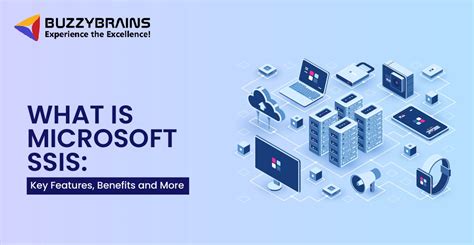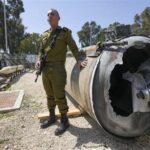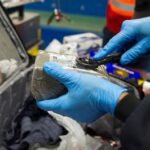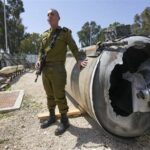
A seemingly innocuous head movement triggered a stroke for a 48-year-old man, prompting him to advocate for increased awareness of stroke symptoms and risk factors.
David Newman, now 50, suffered a stroke two years ago, an event he attributes to a simple turn of his head. This seemingly harmless action tore his vertebral artery, leading to a blood clot that cut off oxygen to his brainstem. Newman is now sharing his experience to underscore the importance of recognizing stroke symptoms and seeking immediate medical attention.
“I literally just turned my head, that was it,” Newman told Yahoo Lifestyle. “There was no pain, no big pop, no feeling anything weird. I just turned my head, and that was that.”
Newman’s ordeal began with a constellation of symptoms that he initially dismissed. He experienced dizziness, nausea, and numbness on one side of his body. Thinking it was merely a virus, he waited for the symptoms to subside. However, his condition worsened, leading his wife to call emergency services.
Upon arrival at the hospital, doctors quickly diagnosed Newman with a stroke. The tear in his vertebral artery had formed a blood clot, obstructing blood flow to his brainstem. This type of stroke, while rare, can have devastating consequences.
The vertebral arteries are major blood vessels in the neck that supply blood to the brain. A tear in one of these arteries, known as a vertebral artery dissection, can occur due to trauma, sudden movements, or even seemingly benign activities. In some cases, dissections can happen spontaneously.
Newman underwent intensive rehabilitation to regain lost function. He faced challenges with balance, coordination, and speech. Through dedicated therapy and sheer determination, he has made significant progress in his recovery.
Now, Newman is dedicated to raising awareness about stroke, particularly among younger adults. He emphasizes the importance of knowing the BE FAST acronym, a mnemonic device used to identify stroke symptoms: Balance, Eyes, Face, Arms, Speech, and Time.
- Balance: Sudden loss of balance or coordination.
- Eyes: Sudden changes in vision, such as double vision or blurred vision.
- Face: Facial drooping or weakness on one side.
- Arms: Weakness or numbness in one arm.
- Speech: Slurred speech or difficulty understanding speech.
- Time: Time is critical; call 911 immediately if you observe any of these symptoms.
Newman’s story highlights the fact that stroke can affect anyone, regardless of age or apparent health. While stroke is more common in older adults, younger people are not immune. Risk factors for stroke include high blood pressure, high cholesterol, smoking, diabetes, and family history. Lifestyle factors such as diet and exercise also play a significant role.
“I never thought I was at risk,” Newman admits. “I was relatively healthy, and I didn’t have any of the typical risk factors. That’s why it’s so important to be aware of the symptoms and to act quickly.”
He urges everyone to learn the BE FAST acronym and to seek immediate medical attention if they suspect a stroke. Early diagnosis and treatment can significantly improve outcomes and reduce the risk of long-term disability. Treatments for stroke include clot-busting drugs, such as tissue plasminogen activator (tPA), and mechanical thrombectomy, a procedure to remove the clot. These treatments are most effective when administered within a few hours of the onset of symptoms.
Newman’s experience has transformed his perspective on life. He now appreciates every moment and is committed to making a difference in the lives of others. Through his advocacy work, he hopes to empower people to take control of their health and to prevent stroke.
Stroke is a leading cause of death and disability in the United States. According to the Centers for Disease Control and Prevention (CDC), someone in the U.S. has a stroke every 40 seconds. Every 3.5 minutes, someone dies of a stroke. Approximately 87% of all strokes are ischemic strokes, which occur when blood flow to the brain is blocked. Hemorrhagic strokes occur when a blood vessel in the brain ruptures. Transient ischemic attacks (TIAs), often called “mini-strokes,” are temporary disruptions of blood flow to the brain. TIAs are a warning sign that a more serious stroke may occur in the future.
Increased awareness of stroke risk factors and symptoms is crucial for prevention and early intervention. Public health campaigns, such as the American Stroke Association’s “Target: Stroke” initiative, aim to educate people about stroke and to improve outcomes for stroke patients. These campaigns emphasize the importance of controlling blood pressure, managing cholesterol, quitting smoking, and maintaining a healthy lifestyle. They also encourage people to learn the BE FAST acronym and to seek immediate medical attention if they experience any stroke symptoms.
Newman’s story serves as a powerful reminder that stroke can strike unexpectedly and that awareness is key to survival. His advocacy efforts are helping to raise awareness and to empower people to take action to protect their health. By sharing his personal experience, he is making a difference in the lives of others and helping to prevent future strokes.
The American Stroke Association provides resources and support for stroke survivors and their families. Their website, stroke.org, offers information about stroke prevention, treatment, and rehabilitation. They also provide a directory of stroke support groups and other resources.
In addition to raising awareness, Newman is also working to promote research on stroke and to improve access to stroke care. He believes that more research is needed to understand the causes of stroke and to develop new and more effective treatments. He also advocates for policies that will improve access to stroke care, particularly in underserved communities.
Newman’s journey from stroke survivor to stroke advocate is an inspiring example of resilience and determination. His story highlights the importance of awareness, early intervention, and ongoing support for stroke survivors. By sharing his experience, he is helping to make a difference in the lives of others and to create a world free from stroke.
The long-term effects of stroke can vary widely depending on the severity of the stroke and the area of the brain that was affected. Some people recover completely, while others experience permanent disability. Common long-term effects of stroke include paralysis, weakness, difficulty with speech and language, problems with memory and thinking, and emotional changes. Rehabilitation can help stroke survivors regain lost function and improve their quality of life.
Newman’s story underscores the importance of taking stroke seriously, regardless of age or perceived risk. His experience is a reminder that stroke can happen to anyone and that early recognition and treatment are critical for survival and recovery. His advocacy work is helping to raise awareness and to empower people to take control of their health and to prevent stroke. The original article also touched on the support he received from his wife. The emotional and practical support from family and friends is invaluable during stroke recovery. Caregivers play a crucial role in helping stroke survivors regain their independence and improve their quality of life. Support groups can provide a sense of community and connection for stroke survivors and their caregivers. Sharing experiences and learning from others can be a powerful source of encouragement and support. The financial burden of stroke can also be significant. Stroke survivors may face high medical bills, rehabilitation costs, and lost income. Financial assistance programs and resources are available to help stroke survivors and their families manage the financial challenges of stroke.
Newman’s message is clear: Know the signs of stroke, act fast, and don’t hesitate to seek medical attention. Early intervention can save lives and minimize long-term disability. His story is a testament to the power of awareness, advocacy, and resilience. It reminds us that even seemingly harmless actions can have serious consequences and that vigilance is key to protecting our health.
The story also implicitly highlights the importance of regular medical check-ups. While Newman didn’t have traditional risk factors, a routine check-up might have identified potential vulnerabilities in his vascular system, although vertebral artery dissection is difficult to predict. It reinforces the proactive approach to healthcare, especially as we age. Doctors are now suggesting regular blood pressure checks, cholesterol monitoring and healthy lifestyle choices to mitigate the risks of strokes and other cardiovascular diseases. Another aspect of Newman’s case is the relative rarity of stroke caused by vertebral artery dissection from a simple head turn. It underscores the fact that while common risk factors exist, strokes can sometimes occur due to unpredictable and less understood mechanisms. This highlights the need for continued research into the various causes of stroke and the development of more personalized prevention strategies.
The article further touches on the psychological impact of stroke. Beyond the physical challenges, survivors often face emotional difficulties such as depression, anxiety, and feelings of isolation. Mental health support is an essential component of stroke recovery, helping survivors cope with the emotional consequences of the event and improve their overall well-being. Counseling, therapy, and support groups can provide valuable resources for addressing these psychological needs. Newman’s positive outlook, coupled with his dedication to raising awareness, serves as a powerful example of how to navigate the psychological challenges of stroke and find purpose in recovery.
The information presented also aligns with the American Heart Association/American Stroke Association guidelines for stroke prevention and treatment. These guidelines emphasize the importance of early recognition of stroke symptoms, rapid transport to a hospital capable of providing acute stroke care, and timely administration of appropriate treatments. They also stress the importance of long-term management of risk factors and rehabilitation to maximize recovery. Newman’s story underscores the importance of adhering to these guidelines and seeking comprehensive stroke care.
Finally, the narrative serves as a reminder that stroke recovery is a marathon, not a sprint. It requires ongoing commitment to rehabilitation, lifestyle changes, and self-care. While the initial stages of recovery may be challenging, with perseverance and support, stroke survivors can achieve significant improvements in their physical, cognitive, and emotional well-being. Newman’s journey is a testament to the power of the human spirit and the potential for recovery even after a devastating event.
Frequently Asked Questions (FAQ)
-
What is a vertebral artery dissection, and how does it cause a stroke? A vertebral artery dissection is a tear in the wall of one of the vertebral arteries, which are major blood vessels in the neck that supply blood to the brain. This tear can lead to the formation of a blood clot, which can then travel to the brain and block blood flow, causing a stroke. The dissection can occur due to trauma, sudden movements, or, in rare cases, spontaneously. In David Newman’s case, it was attributed to a seemingly harmless head turn. “I literally just turned my head, that was it,” Newman told Yahoo Lifestyle. “There was no pain, no big pop, no feeling anything weird. I just turned my head, and that was that.”
-
What are the common symptoms of a stroke, and what should I do if I suspect someone is having one? The common symptoms of a stroke are best remembered using the BE FAST acronym:
- Balance: Sudden loss of balance or coordination.
- Eyes: Sudden changes in vision, such as double vision or blurred vision.
- Face: Facial drooping or weakness on one side.
- Arms: Weakness or numbness in one arm.
- Speech: Slurred speech or difficulty understanding speech.
- Time: Time is critical; call 911 immediately if you observe any of these symptoms. If you suspect someone is having a stroke, it is crucial to call 911 immediately. Early diagnosis and treatment can significantly improve outcomes and reduce the risk of long-term disability. Clot-busting drugs, such as tissue plasminogen activator (tPA), and mechanical thrombectomy, a procedure to remove the clot, are most effective when administered within a few hours of the onset of symptoms.
-
What are the risk factors for stroke, and how can I reduce my risk? Risk factors for stroke include high blood pressure, high cholesterol, smoking, diabetes, heart disease, and family history of stroke. Lifestyle factors such as diet, exercise, and weight also play a significant role. You can reduce your risk of stroke by controlling blood pressure and cholesterol, quitting smoking, managing diabetes, maintaining a healthy weight, eating a healthy diet, and exercising regularly. Regular check-ups with your doctor can help identify and manage risk factors.
-
What is the treatment for stroke, and what is the rehabilitation process like? Treatment for stroke depends on the type of stroke and the severity of the symptoms. Ischemic strokes are typically treated with clot-busting drugs (tPA) or mechanical thrombectomy to restore blood flow to the brain. Hemorrhagic strokes may require surgery to stop the bleeding. Rehabilitation is an essential part of the recovery process and may include physical therapy, occupational therapy, speech therapy, and psychological counseling. The goal of rehabilitation is to help stroke survivors regain lost function, improve their quality of life, and adapt to any long-term disabilities. “He faced challenges with balance, coordination, and speech. Through dedicated therapy and sheer determination, he has made significant progress in his recovery,” the article stated, referring to David Newman’s experience.
-
Where can I find more information and support for stroke survivors and their families? The American Stroke Association (stroke.org) is a valuable resource for information about stroke prevention, treatment, and rehabilitation. They also provide a directory of stroke support groups and other resources. Additionally, many hospitals and medical centers have stroke centers and rehabilitation programs that offer comprehensive care and support for stroke survivors and their families. Local community organizations and government agencies may also offer resources and assistance. It is essential to seek support and connect with others who have experienced stroke to share experiences and learn from each other. The National Institute of Neurological Disorders and Stroke (NINDS) is another excellent resource for information about stroke research and clinical trials. NINDS is part of the National Institutes of Health (NIH) and conducts and supports research on the brain and nervous system. Their website (ninds.nih.gov) provides information about stroke causes, prevention, diagnosis, treatment, and rehabilitation. In addition to the above resources, it is essential to maintain open communication with your healthcare team, including your doctor, neurologist, and therapists. They can provide personalized guidance and support based on your individual needs and circumstances. Remember that stroke recovery is a journey, and it is important to be patient with yourself and celebrate your progress along the way. The role of technology in stroke rehabilitation is also expanding. Virtual reality (VR) and other innovative technologies are being used to enhance therapy and improve outcomes. VR can provide immersive and engaging environments for practicing motor skills, cognitive tasks, and other rehabilitation exercises. These technologies can also provide real-time feedback and track progress, allowing therapists to tailor treatment to individual needs. Another area of increasing focus is the prevention of secondary strokes. Stroke survivors are at higher risk of having another stroke, so it is crucial to manage risk factors and adhere to medical recommendations. This may include taking medications to control blood pressure, cholesterol, and blood clotting, as well as making lifestyle changes such as quitting smoking and eating a healthy diet. Regular follow-up appointments with your doctor are essential to monitor your condition and prevent future strokes. The impact of stroke extends beyond the individual survivor to their families and caregivers. Caregivers often face significant challenges in providing support and managing the day-to-day needs of stroke survivors. It is important for caregivers to prioritize their own health and well-being and to seek support from family, friends, and community resources. Respite care services can provide temporary relief for caregivers, allowing them to rest and recharge. Finally, it is important to remember that stroke recovery is a process that can take months or even years. There will be ups and downs along the way, and it is essential to remain positive and persistent. Celebrate small victories, stay connected with your support network, and never give up on your goals. With determination, resilience, and the right support, stroke survivors can achieve significant improvements in their quality of life. David Newman’s story is a powerful example of the potential for recovery and the importance of advocacy in raising awareness and improving outcomes for stroke survivors. The article could also be expanded to include a section on the different types of aphasia that can result from a stroke. Aphasia is a language disorder that affects the ability to communicate. It can affect the ability to speak, write, read, and understand language. There are several different types of aphasia, depending on the area of the brain that is affected. Broca’s aphasia affects the ability to produce speech, while Wernicke’s aphasia affects the ability to understand language. Global aphasia is a severe form of aphasia that affects both speech production and comprehension. Speech therapy can help people with aphasia improve their communication skills. The story also implicitly underscores the need for better public health initiatives focused on stroke prevention and early detection, especially targeting younger populations. Many people mistakenly believe that stroke is primarily a disease of the elderly, leading to a lack of awareness and delayed recognition of symptoms in younger individuals. Public health campaigns should emphasize that stroke can happen at any age and should educate people about the risk factors, symptoms, and importance of seeking immediate medical attention. Furthermore, the rewritten article can include information about advancements in stroke treatment and technology. Novel neuroprotective agents, advanced imaging techniques, and minimally invasive surgical procedures are constantly being developed and refined. Telemedicine and remote monitoring technologies are also playing an increasing role in stroke care, allowing for faster diagnosis, treatment, and rehabilitation in underserved areas. The article could also delve deeper into the concept of “time is brain” in stroke care. Every minute that blood flow is blocked to the brain, millions of brain cells die. This underscores the urgency of seeking immediate medical attention at the first sign of stroke. Healthcare systems are working to improve stroke response times by streamlining emergency medical services, establishing stroke centers, and implementing protocols for rapid diagnosis and treatment. It’s also crucial to talk about the psychosocial aspects of recovery. Many stroke survivors struggle with depression, anxiety, and other mental health issues. These challenges can significantly impact their quality of life and ability to participate in rehabilitation. Mental health support should be an integral part of stroke care, including counseling, therapy, and support groups. Finally, the article could highlight the importance of family and caregiver support in stroke recovery. Family members and caregivers play a crucial role in providing emotional, practical, and financial support to stroke survivors. It’s important for caregivers to have access to resources and support to help them manage the demands of caregiving and avoid burnout.









